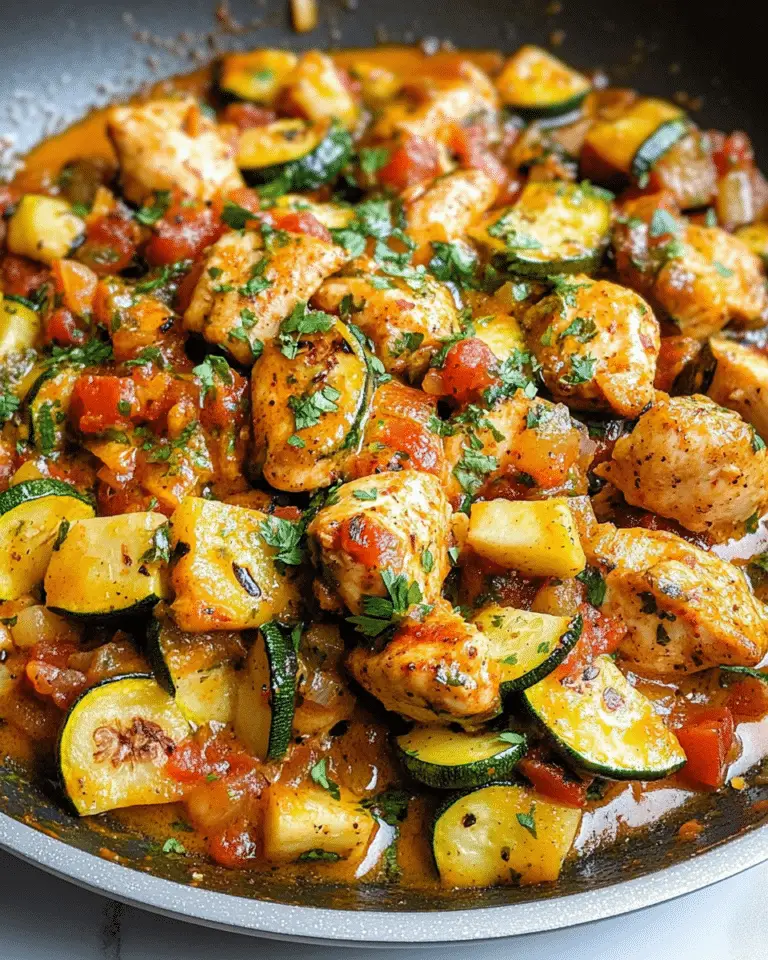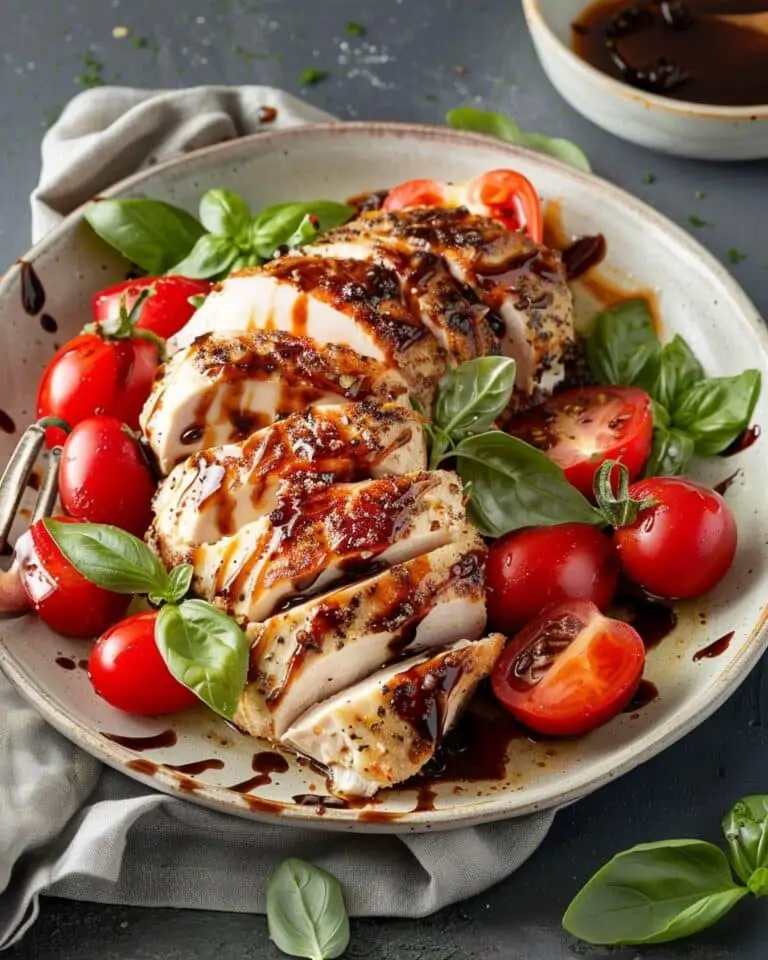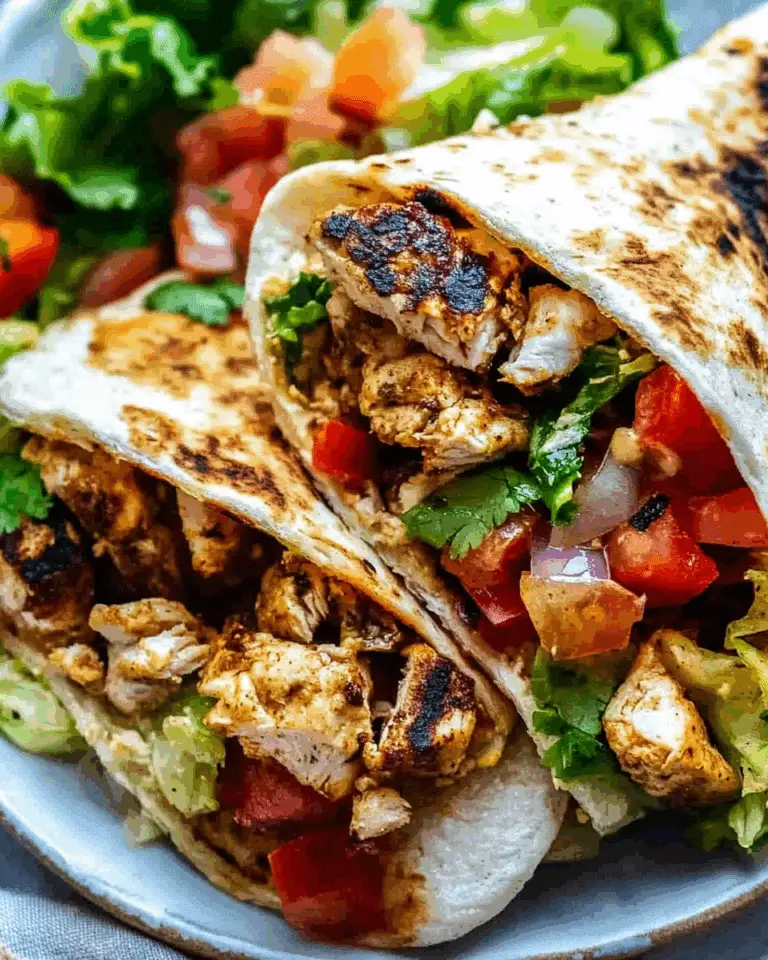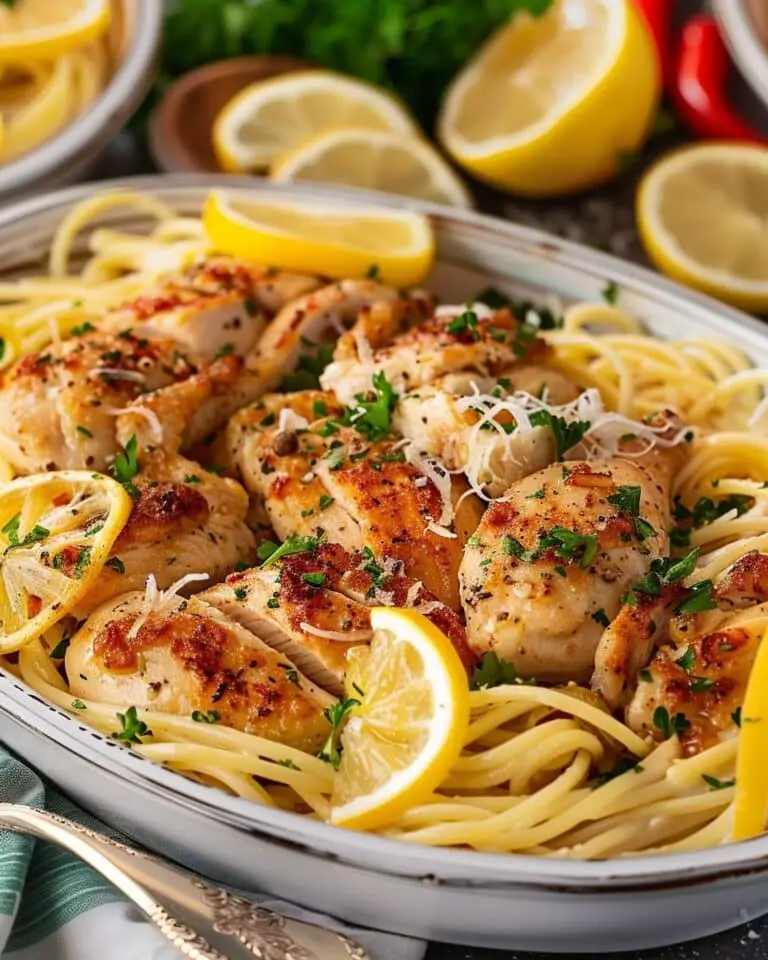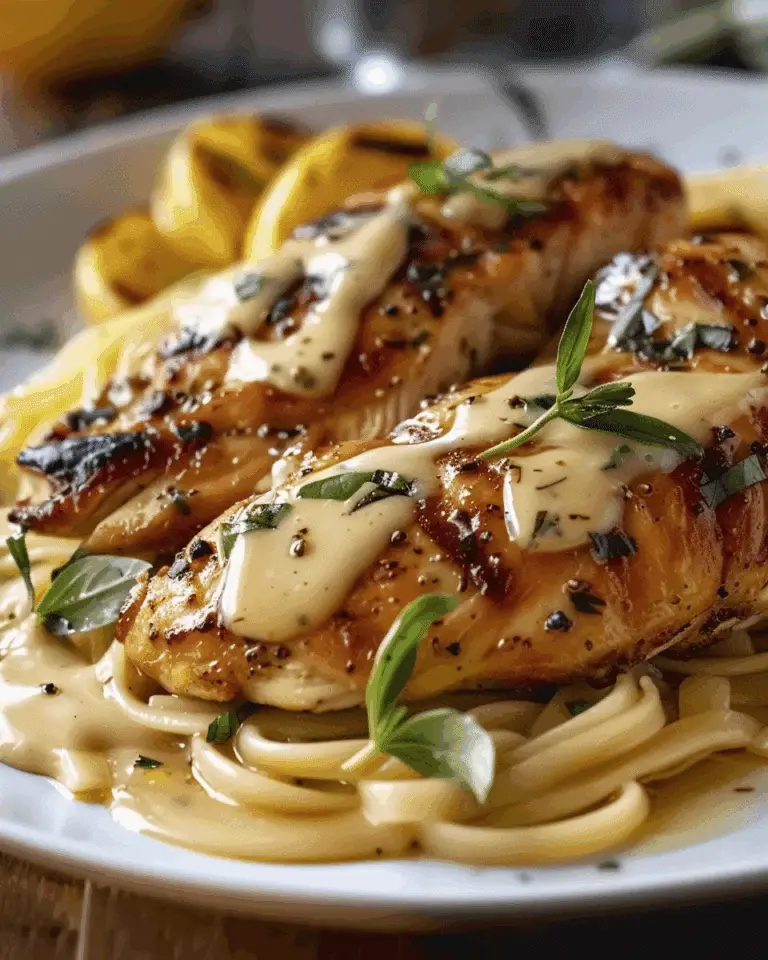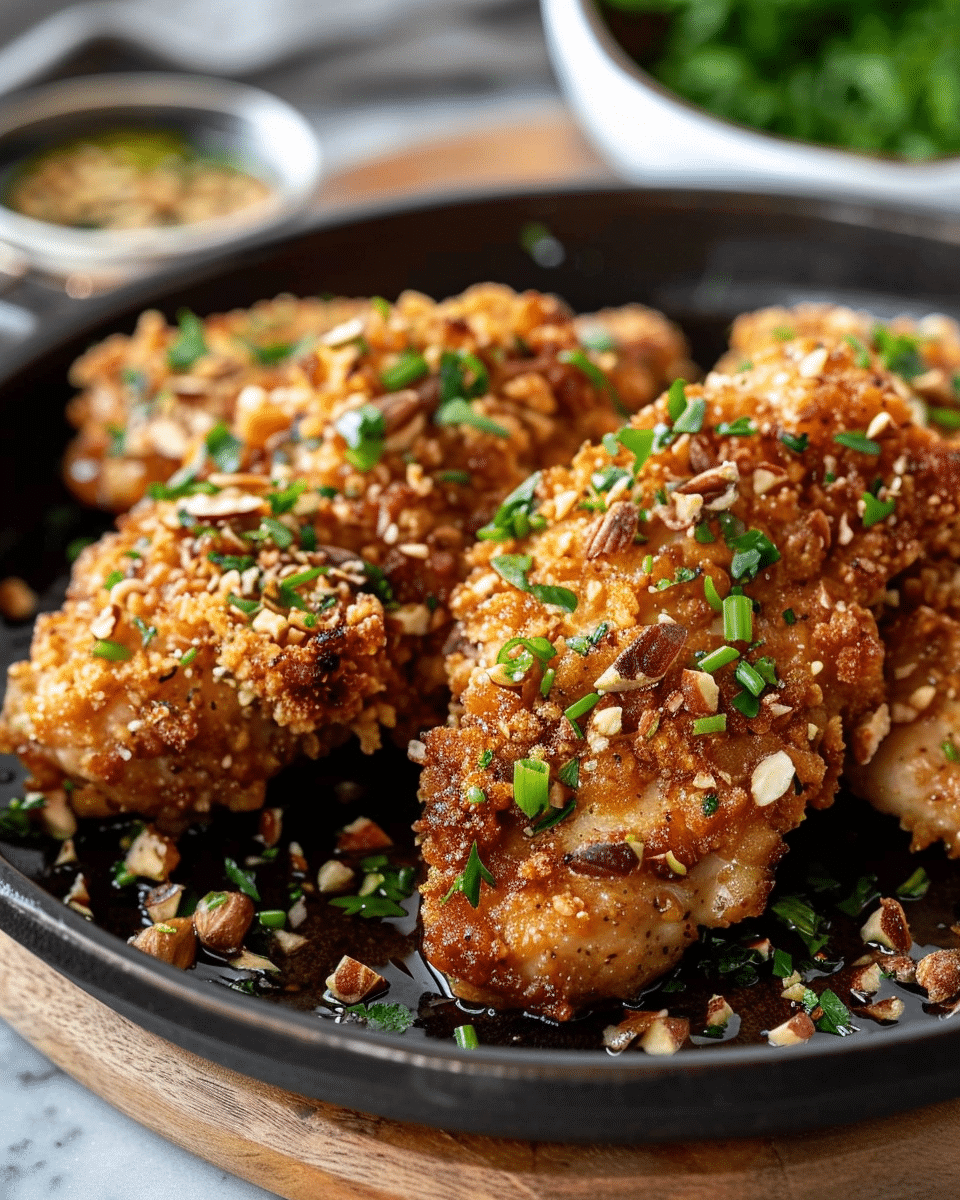
A deliciously crisp walnut coating paired with tender chicken and a sweet-tangy honey mustard glaze makes this dish an elevated weeknight dinner option. The combination of flavors creates a restaurant-quality meal that’s surprisingly simple to prepare at home.
Why You’ll Love This Recipe
This walnut-crusted chicken delivers a perfect balance of textures and flavors. The walnut coating provides a satisfying crunch while keeping the chicken moist and tender. The honey mustard glaze adds a beautiful contrast with its sweet and tangy notes that complement the nutty crust. It’s an impressive dish that looks and tastes gourmet but requires minimal effort. Whether you’re cooking for your family or hosting guests, this recipe is versatile enough for both casual dinners and special occasions. Plus, the make-ahead marinade means most of the prep work happens hours before cooking, making dinner assembly quick and stress-free.

Ingredients
(Tip: You’ll find the full list of ingredients and measurements in the recipe card below.)
Extra-virgin olive oil provides moisture and helps the marinade adhere to the chicken while adding a subtle fruity note to the dish. It also helps create that perfect sear when cooking.
Dijon mustard adds tangy depth to both the marinade and glaze. Its distinctive flavor penetrates the chicken during marination and creates a wonderful base for the coating to adhere to.
Chicken brothbrings acidity and complexity to the marinade, helping to tenderize the chicken.
Garlic infuses the marinade with aromatic flavor that permeates the chicken during its soak. Fresh minced garlic delivers the strongest flavor, but pre-minced works in a pinch.
Dried thyme contributes an earthy, slightly floral note that pairs beautifully with the nuttiness of the walnuts. It’s a classic herb that complements chicken perfectly.
Chicken thighs or breasts are the star of this dish. Thighs tend to be more forgiving and stay juicier, while breasts offer a leaner option. Either works beautifully with this preparation method.
Walnuts create the crunchy, flavorful crust that makes this dish special. Finely chopping them ensures they adhere well to the chicken and cook evenly. The natural oils in the nuts help create a golden, crispy exterior.
Flour works with the walnuts to create a consistent coating that adheres to the chicken. It helps absorb any excess moisture and ensures the crust gets crispy when cooked.
Honey brings natural sweetness to the glaze, balancing the sharp notes of the Dijon mustard. Its thick consistency helps the glaze cling to the chicken.
Directions
- In a large bowl, whisk the olive oil, mustard,chicken broth, garlic, and dried thyme together. Add the chicken, turning to coat. Cover tightly and refrigerate for at least 4 hours and up to 12 hours.
- In a shallow dish such as a 9-inch square baking pan or a pie dish, combine the walnuts, flour, salt, and pepper together. Remove the chicken, shake off any excess marinade, and dip both sides of the chicken in the walnut mixture. Make sure each side is generously coated.
- Preheat the oven to 425°F (218°C).
- Heat 1 Tablespoon of olive oil in an oven-safe skillet over medium heat. Add the chicken and sear for 2 minutes, 1 minute on each side. Transfer skillet to the oven and bake, covered loosely with aluminum foil, for 15–20 minutes or until the chicken is fully cooked through. (Chicken is considered done when an instant read thermometer reads the center of the thickest part as at least 165°F (74°C).)
- Whisk the glaze ingredients together and serve with chicken. Garnish chicken with fresh parsley, if desired.
Servings and Timing
This recipe serves 4 people generously. It requires 4-12 hours of marinating time, which is mostly hands-off. Active preparation takes about 15 minutes, with an additional 25 minutes of cooking time. The entire active cooking process from preparing the coating to serving is approximately 40 minutes, making it feasible for a weeknight dinner if you prepare the marinade in the morning before work.
Variations
Pecan-Crusted Chicken: Substitute finely chopped pecans for walnuts for a slightly sweeter, more buttery flavor profile.
Herb-Enhanced Crust: Add 1 tablespoon of fresh rosemary or 2 tablespoons of fresh parsley to the walnut mixture for an aromatic twist.
Spicy Version: Add 1/2 teaspoon of cayenne pepper to the walnut coating and a dash of hot sauce to the honey mustard glaze for heat lovers.
Lemon-Herb Variation: Add lemon zest to the marinade and serve with a lemon-herb butter instead of the honey mustard glaze.
Gluten-Free Option: Substitute almond flour or gluten-free flour blend for the all-purpose flour in the coating mixture.
Maple Glaze Alternative: Replace honey with pure maple syrup in the glaze for a different sweetness profile that pairs wonderfully with the walnuts.
Storage/Reheating
Refrigeration: Store leftover walnut-crusted chicken in an airtight container in the refrigerator for up to 3 days. Keep the honey mustard glaze in a separate container to prevent the chicken coating from becoming soggy.
Freezing: While best enjoyed fresh, you can freeze the cooked chicken for up to 2 months. Wrap individual pieces tightly in plastic wrap, then place in a freezer-safe container or bag. The glaze doesn’t freeze well, so make it fresh when serving.
Reheating in the Oven: For the best results, reheat the chicken in a 350°F (175°C) oven for 10-15 minutes until heated through. This method helps restore some crispness to the walnut coating.
Reheating on the Stovetop: Warm the chicken in a skillet over medium-low heat with a small amount of oil to help re-crisp the exterior.
Microwave Method: If you’re short on time, the microwave works, though the coating won’t stay crisp. Heat on 70% power in 30-second increments until warmed through.
Serving Leftover Chicken Cold: This chicken also tastes delicious cold, sliced over a salad with the honey mustard glaze drizzled on top as a dressing.
FAQs
Can I use chicken breasts instead of thighs?
Yes, you can use either boneless, skinless chicken breasts or thighs based on your preference. Chicken breasts may cook slightly faster and offer a leaner option, while thighs tend to stay more moist and flavorful. If using breasts, you might want to pound them to an even thickness to ensure uniform cooking.
Is there a nut-free alternative for this recipe?
For a nut-free version, try using panko breadcrumbs mixed with grated Parmesan cheese and herbs. This will still provide a crispy texture without using nuts. Crushed cornflakes or crushed pretzels can also make a crunchy alternative coating.
Can I make this dish ahead of time?
While the chicken is best served immediately after cooking for maximum crispness, you can prepare components ahead of time. The chicken can marinate for up to 12 hours, and the walnut coating can be prepared a day in advance. The honey mustard glaze can also be made ahead and refrigerated for up to a week.
How do I know when the chicken is fully cooked?
The most reliable method is using an instant-read thermometer, which should register 165°F (74°C) when inserted into the thickest part of the chicken. If you don’t have a thermometer, cut into the thickest piece—the meat should be completely opaque with no pink remaining.
What’s the best way to finely chop walnuts?
A food processor works best for achieving evenly chopped walnuts without turning them into paste. Pulse in short bursts until you reach the desired consistency. Alternatively, place the walnuts in a sealed plastic bag and gently crush them with a rolling pin or heavy object.
Can I make this recipe gluten-free?
Yes, simply substitute the all-purpose flour with a gluten-free flour blend, almond flour, or rice flour. Ensure your Dijon mustard is also gluten-free, as some brands may contain trace gluten.
What sides pair well with walnut-crusted chicken?
This versatile dish pairs beautifully with steamed vegetables, rice pilaf, roasted potatoes, or a fresh green salad. The honey mustard glaze can even be made in extra quantity to dress the salad for a cohesive meal.
Why is my walnut coating falling off?
This usually happens if the chicken is too wet when dredging or if the oil isn’t hot enough when searing. Make sure to shake off excess marinade before coating, and ensure your pan is properly heated before adding the chicken. Pressing the coating firmly onto the chicken also helps it adhere better.
Can I use this recipe for meal prep?
Yes, this chicken works well for meal prep. Cook as directed, allow to cool completely, then portion into containers with your chosen sides. For best results, keep the glaze separate until serving time. Consume within 3 days for optimal quality.
Conclusion
This walnut-crusted chicken with honey mustard glaze combines simple ingredients to create an impressive, flavorful dish that feels special enough for company yet easy enough for weeknight dinners. The nutty crunch of the coating paired with the tender, juicy chicken and sweet-tangy glaze creates a perfect balance of flavors and textures. The recipe’s versatility means you can adapt it to your preferences and dietary needs while still maintaining its signature appeal. Whether you’re serving it alongside a fresh salad in summer or with roasted vegetables in winter, this dish is sure to become a staple in your recipe collection. With its make-ahead components and straightforward preparation, it’s the kind of recipe that makes homemade cooking both accessible and exciting.
Print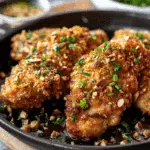
Walnut-Crusted Chicken with Honey Mustard Glaze
- Total Time: 5 hours
- Yield: 4 servings
- Diet: Low Salt
Description
This walnut-crusted chicken, coated in a flavorful mixture of walnuts, flour, and seasoning, is paired with a sweet and tangy honey mustard glaze. It’s savory, crispy, and the perfect balance of flavors for a satisfying meal.
Ingredients
1/3 cup (80ml) extra-virgin olive oil, plus 1 more tablespoon for pan
1/4 cup (60g) Dijon mustard
1/4 cup (60ml) chicken broth
3 garlic cloves, minced
1 teaspoon dried thyme
1.5 pounds (24 ounces/680g) boneless, skinless chicken thighs or breasts
1 and 1/2 cups (190g) very finely chopped walnuts
3/4 cup (94g) all-purpose or whole wheat flour (spooned & leveled)
1 teaspoon salt
1/2 teaspoon freshly ground black pepper
Optional: chopped fresh parsley, for garnish
Honey Mustard Glaze:
3 tablespoons Dijon mustard
1/3 cup (113g) honey
Instructions
- In a large bowl, whisk together the olive oil, Dijon mustard, chicken broth, garlic, and dried thyme. Add the chicken and turn it to coat thoroughly. Cover the bowl tightly and refrigerate for at least 4 hours, or up to 12 hours.
- In a shallow dish, combine the finely chopped walnuts, flour, salt, and pepper. Remove the chicken from the marinade, shake off any excess, and dip each side of the chicken into the walnut mixture, ensuring it’s generously coated.
- Preheat the oven to 425°F (218°C).
- Heat 1 tablespoon of olive oil in an oven-safe skillet over medium heat. Add the chicken to the skillet and sear each side for about 1 minute, until lightly browned.
- Transfer the skillet to the oven and bake, covered loosely with aluminum foil, for 15–20 minutes or until the chicken reaches an internal temperature of 165°F (74°C) on an instant-read thermometer.
- In a small bowl, whisk together the Dijon mustard and honey to make the glaze.
- Once the chicken is cooked, serve it with the honey mustard glaze on the side. Garnish with fresh parsley if desired.
- Leftovers can be stored in the refrigerator for a few days and can be reheated on the stove, in the microwave, or in the oven.
Notes
Marinate the chicken for at least 4 hours for the best flavor.
Ensure the chicken reaches an internal temperature of 165°F (74°C) for safe consumption.
Store leftovers in the refrigerator and reheat them gently.
Garnish with fresh parsley for a fresh touch.
- Prep Time: 4 hours 30 minutes
- Cook Time: 25 minutes
- Category: Main Dish
- Method: Baking
- Cuisine: American
Nutrition
- Serving Size: 1 serving
- Calories: 475 kcal
- Sugar: 11g
- Sodium: 580mg
- Fat: 30g
- Saturated Fat: 3.5g
- Unsaturated Fat: 25g
- Trans Fat: 0g
- Carbohydrates: 23g
- Fiber: 2g
- Protein: 34g
- Cholesterol: 95mg

